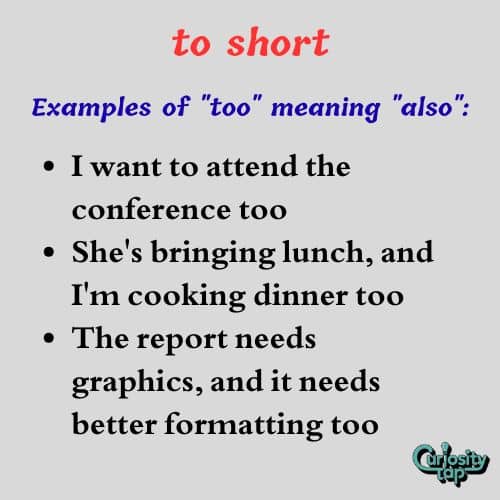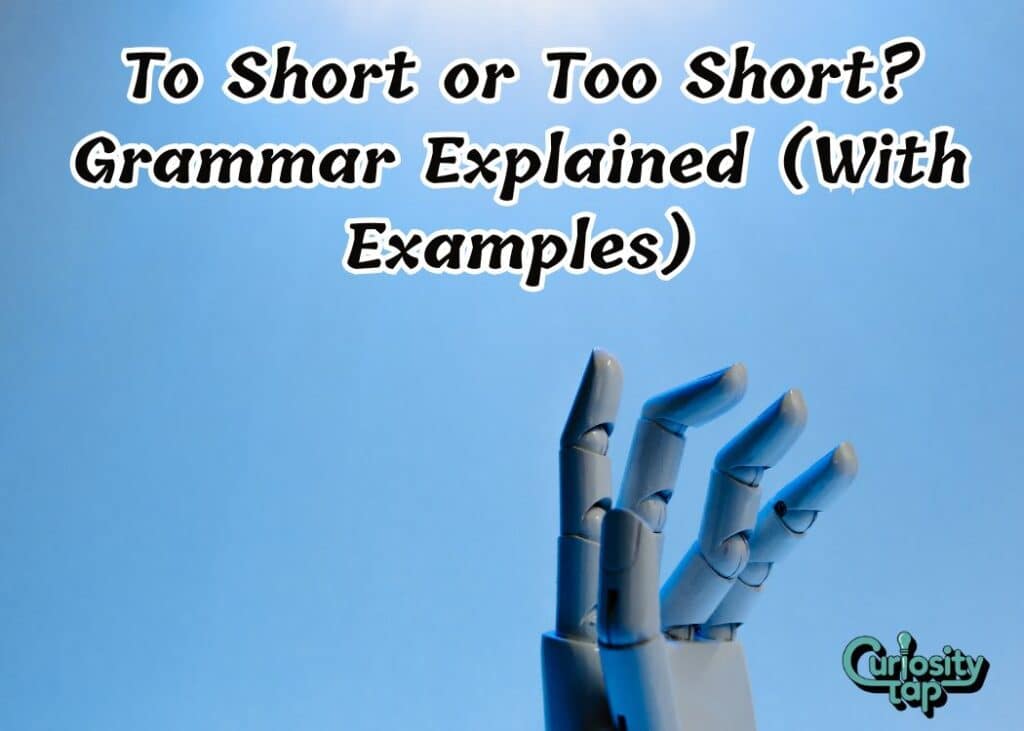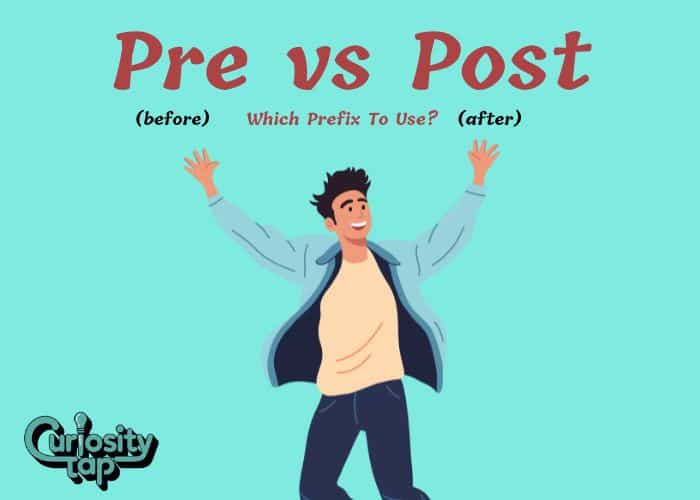Have you ever typed a sentence and paused, wondering if you should write “to short” or “too short”? You’re not alone.
This common grammar mistake trips up even experienced writers, leaving them second-guessing their word choice at the worst possible moments.
Picture this: Sarah is writing an important email to her boss about why her presentation slides are too short for the upcoming meeting. She types “The slides are to short for our 30-minute presentation” and hits send.
Later, she realizes her mistake and cringes, knowing that grammar errors can undermine her professional credibility.
This seemingly simple choice between “to” and “too” represents one of the most frequent homophones confusion issues in English writing.
The consequences extend far beyond embarrassment – incorrect word usage can change your message’s meaning entirely and impact how readers perceive your expertise.
The Real Meaning Behind “Too Short”
Understanding the correct usage of “too short” starts with recognizing what this phrase actually means. “Too short” indicates that something is excessively brief or insufficient in length, duration, or extent.
The word “too” functions as an adverb that modifies adjectives to express excess or an undesirable degree.
When combined with “short,” it creates a descriptive phrase that signals inadequacy or insufficiency.
Consider these real-world examples:
- Maria’s dress was too short for the formal dinner party
- The movie felt too short – we wanted to see more character development
- His explanation was too short to help us understand the complex process
- The vacation seemed too short after months of planning
In each case, “too short” communicates that the length, duration, or extent falls below expectations or requirements.
Why “To Short” is Always Wrong
The phrase “to short” is grammatically incorrect in standard English. The word “to” serves as either a preposition or part of an infinitive verb construction, but it cannot function as a modifier for adjectives like “short.”
Here’s why this matters:
“To” as a preposition shows direction, purpose, or relationship:
- I’m going to the store
- Give this to Michael
- The key to success is persistence
“To” in infinitive constructions precedes the base form of verbs:
- I want to learn Spanish
- She decided to call her grandmother
- They need to finish the project
Neither function allows “to” to modify adjectives, making “to short” a fundamental grammar error that disrupts sentence structure and confuses readers.
Grammar Rules That Make the Difference
Understanding the grammatical distinction between “to” and “too” requires recognizing their different parts of speech and functions in English sentence structure.
The “Too” Rule
“Too” functions as an adverb with two primary meanings:
- Excessive degree: indicating something is more than necessary or desirable
- Addition: meaning “also” or “as well”
The “To” Rule
“To” operates as:
- A preposition showing direction, purpose, or relationship
- Part of infinitive verbs (to + base verb form)
| Word | Part of Speech | Function | Example |
| Too | Adverb | Shows excess | The coffee is too hot |
| Too | Adverb | Means “also” | I’m coming too |
| To | Preposition | Shows direction | Walking to school |
| To | Infinitive marker | Forms infinitive | I want to help |
Also Read: Is it Witness’ or Witness’s or Witness? A Simple Guide
Real-Life Examples in Different Contexts
Professional writing often requires precise word choice, making the “too short” vs. “to short” distinction crucial for effective communication.
Business Communication Examples
- The quarterly report was too short – investors need more detailed analysis
- Our presentation time is too short to cover all key points effectively
- The contract terms seem too short for such a complex project
Academic Writing Examples
- The essay introduction feels too short for a 3,000-word paper
- The research study period was too short to draw meaningful conclusions
- Student responses were too short to demonstrate understanding
Everyday Conversation Examples
- This line at the grocery store is too short – something must be wrong
- My lunch break is too short to run errands
- The movie trailer was too short to show the plot
Breaking Down Common Homophone Confusion
Homophones – words that sound identical but have different meanings and spellings – create significant challenges for writers. The “to/too/two” trio represents one of English’s most problematic phonetic confusion patterns.
Why This Confusion Happens
Identical pronunciation makes it impossible to distinguish these words by sound alone. Writers must rely on:
- Contextual understanding
- Grammatical knowledge
- Spelling awareness
- Meaning recognition
The Spell-Check Problem
Modern spell-check software cannot always catch homophone errors because “to short” contains two correctly spelled words. This means writers must develop manual proofreading skills to catch these mistakes.
Memory Tricks That Actually Work
Developing reliable memory techniques helps writers choose correctly between “to” and “too” in real-time writing situations.
The “Extra O” Method
Remember that “too” means “too much” or “extra” – both concepts requiring something additional. The extra “o” in “too” represents that excess.
The Substitution Test
Replace “too” with “excessively” or “very” in your sentence:
- The presentation was too short → The presentation was excessively short ✓
- The presentation was to short → The presentation was excessively short ✗
The Direction Test
If you can substitute “toward” or “in the direction of,” use “to”:
- I’m going to the meeting → I’m going toward the meeting ✓
- The report is to brief → The report is toward brief ✗
Professional Writing Standards and Expectations
Grammatical accuracy directly impacts professional credibility and reader perception. Understanding proper usage conventions becomes especially important in formal contexts.
Impact on Professional Communication
Grammar mistakes in professional writing can:
- Undermine your expertise perception
- Distract from your message content
- Reduce reader confidence in your abilities
- Create barriers to effective communication
Best Practices for Error Prevention
Implement these proofreading strategies:
- Read your writing aloud to catch awkward phrasing
- Use the substitution tests mentioned above
- Have colleagues review important documents
- Develop systematic editing routines
Advanced Usage Scenarios
Beyond basic “too short” applications, this grammar rule applies to numerous complex sentence structures and professional contexts.
Comparative Constructions
- The deadline is too short compared to the project scope
- Her answer was too short relative to the question’s complexity
- The budget seems too short given current market conditions
Conditional Statements
- If the presentation is too short, we’ll need additional content
- Should the meeting prove too short, we’ll schedule a follow-up
- When explanations are too short, confusion often results

Bonus Tip: The “Also” Exception
Here’s a surprising insight that many writers miss: “too” can mean “also” or “as well,” creating additional usage opportunities beyond the excess meaning.
Examples of “too” meaning “also”:
- I want to attend the conference too
- She’s bringing lunch, and I’m cooking dinner too
- The report needs graphics, and it needs better formatting too
This dual meaning makes “too” more versatile than many writers realize, but it never changes the fact that “to short” remains incorrect in all contexts.
What to Do and What to Avoid
✅ Do This:
- Use “too short” when describing insufficient length or duration
- Apply the substitution test with “excessively” or “very”
- Proofread specifically for homophone errors
- Practice with real-world examples until the distinction becomes automatic
❌ Avoid This:
- Never write “to short” – it’s always grammatically incorrect
- Don’t rely solely on spell-check for homophone detection
- Avoid rushing through the editing process
- Don’t ignore the importance of contextual grammar understanding
Expert Recommendation:
Develop a systematic approach to homophone checking. When you encounter “to/too” decisions, pause and identify whether you need a preposition, infinitive marker, or adverb. This conscious decision-making process will eventually become intuitive with practice.
Frequently Asked Questions
What’s the difference between “to” and “too” in simple terms?
“To” is a preposition showing direction (going to school) or part of infinitive verbs (to learn). “Too” is an adverb meaning “excessively” (too hot) or “also” (me too). The key difference lies in their grammatical function and meaning.
Is “too short” always grammatically correct?
Yes, “too short” is always grammatically correct when describing something that’s excessively brief or insufficient in length. It follows proper English grammar rules with “too” functioning as an adverb modifying the adjective “short.”
How can I remember when to use “too” instead of “to”?
Use the “extra O” memory trick – “too” has an extra “o” because it means “too much” or “extra.” You can also substitute “too” with “excessively” in your sentence. If it makes sense, use “too.” If not, you probably need “to.”
Why do spell-checkers miss “to short” errors?
Spell-check software focuses on individual word spelling rather than contextual grammar. Since both “to” and “short” are correctly spelled words, the program doesn’t recognize that their combination creates a grammar error. This makes manual proofreading essential for catching homophone mistakes.
Conclusion
Mastering the “too short” vs. “to short” distinction isn’t just about avoiding embarrassing typos – it’s about commanding respect through precise communication.
Every time you correctly choose “too short” over the incorrect “to short,” you’re demonstrating your attention to detail and grammatical expertise that sets you apart in both professional and personal writing.
Remember Sarah from our opening story? She now double-checks her homophone usage and has become the go-to person for proofreading important documents at her company.
The beauty of this grammar rule lies in its simplicity: “too” shows excess, “to” shows direction or forms infinitives, and “to short” simply doesn’t exist in proper English. With the memory tricks and substitution tests you’ve learned today, you’ll never again hesitate when choosing between these commonly confused words – and your readers will notice the difference.
Read more knowledgeable blogs on Curiosity Tap
Is this article helpful?

Jackson Pearson is a passionate educator and language enthusiast behind the blog Jackson Pearson. With years of experience in teaching and writing, he specializes in simplifying complex grammar rules, breaking down tricky vocabulary, and crafting learning guides that are both engaging and practical. His mission is to help readers boost their English skills whether they’re beginners or brushing up for fluency. Through every article, Jackson brings clarity, structure, and a spark of curiosity to the world of English learning.



